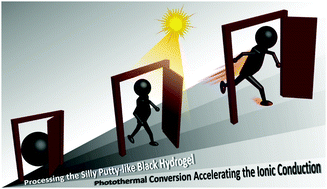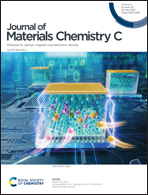Readily producing a Silly Putty-like hydrogel with good self-healing, conductive and photothermal conversion properties based on dynamic coordinate bonds and hydrogen bonds†
Abstract
Silly Putty-like material with tunable mechanical properties, unique rheological behavior and recyclable molding ability has emerged as a promising material for wide-spread use in bionic robots, energy storage and intelligent monitoring devices. To overcome the common heterogeneous aggregation or phase separation problems relating to traditional Silly Putty-like materials, a simple method is proposed here to produce a hydrogel with good self-healing, conductivity and photothermal conversion properties based on dynamic metal–ligand interactions and hydrogen bonds by simply mixing phytate polyvinyl alcohol, pyrrole and Fe3+. The introduction of coordinate bonds endowed the hybrid hydrogel with special rheological behaviors, such as solid–liquid like and shear-thinning properties, which would enable the use of injectable techniques and remolding processing for the Silly Putty-like hydrogel. Moreover, due to a wide range of light absorption by the black conductive polymer, the hydrogel also had a good photothermal conversion capacity, so could be useful for reliable photothermal imaging, portable photothermal therapy or sensitive temperature sensing applications. Combined with previous properties, this hydrogel may play a potential role in electronics manufacturing, medical testing and therapy.



 Please wait while we load your content...
Please wait while we load your content...